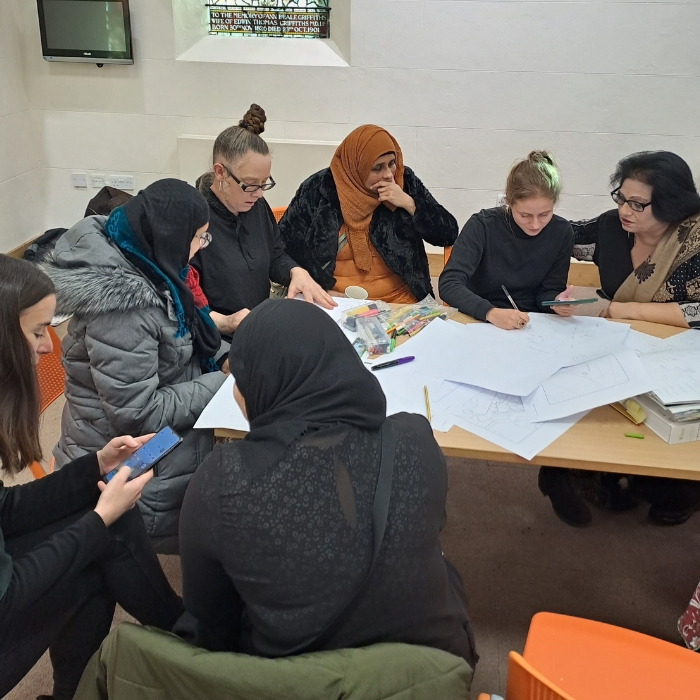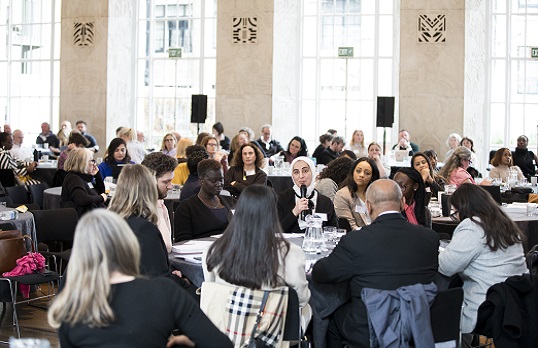The idea that the only leaders out there should be whip-cracking narcissists who lead from the front could well be past its best-by date, says one innovative architect. Instead, a concept of leaders showing empathy invites an alternative way of thinking.
The Harvard Business Review, for instance, talks of empathetic leaders creating psychologically safe spaces where every employee feels valued within a team culture that fosters mutual respect, increases employee productivity, and job satisfaction. When applied to architecture, this recipe has the potential to make for a happier workplace.
With all this in mind, what is empathetic leadership and how can you become an empathetic leader?
What is the structure at Intervention Architecture?
Anna Parker, founder of Birmingham-based Intervention Architecture is a speaker at the forthcoming RIBA Future Leaders 2024 event. She is a self-confessed empath who sees herself more as a coach or facilitator than a leader in the traditional sense. She also does not really see herself as a successful company director, although she is one. This is why her interdisciplinary studio has plans to transition to an employee ownership model and one day achieve ethical B Corp certification in the future.
At Intervention Architecture, there is a structure where staff members have their own day-to-day roles but nothing is ever ego-driven, especially by Anna who suspects her personality does not have much of an ego. “We have an associate director, we have architects, we have architectural assistants and an interior designer, so there are key responsibilities that everyone is really clear on. But we are all sat at the same large table, so everyone can see what I’ve got on my plate and I can see what they've got on theirs. It’s a kind of family atmosphere."
“Being an empathetic leader is about creating an environment where everyone feels that their voices are heard and they can contribute," she explains. "When there is a decision to be made, we enable the whole team to feel like they are co-creating the change, and this is something that I’ve noticed has happened over time.”
Individuals are also encouraged to have open conversations about their behaviour to invite feedback and not resist change. Anna sees benefits in inviting friends and colleagues to offer observational assessments. She recalls a colleague who had a subconscious and frequent habit of apologizing to the rest of the team – but after a bit of encouraged communal feedback, it was soon cured, she laughs.
“Personally, I think that emotional intelligence and having that self-awareness is really critical in leadership and knowing how you impact how others are feeling,” she adds.

Six key principles of empathetic leadership
- Actively listen
This means a leader giving their full attention to other staff members and doing so without judgement – always seeking to understand their perspectives and emotions. - Understand other people’s perspectives
This principle recommends a leader immerse themselves in another person's perspective and perceives situations from their vantage point. It means a genuine effort to understand diverse viewpoints and evaluate the ramifications of one person's actions on others around them, in this case in the workplace. - Be accountable and generous
Being accountable should always start at the top, and good leaders accept full responsibility for failures but on the flip side be generous and share the praise when there is success. - Be a patient teacher
Being a leader is not about ‘barking order’, it’s about slowing things down and explaining concepts clearly to colleagues in order to empower and educate them. Being a great leader is often about coaching and nurturing. - Instil positive intent by being authentic
A ‘trust-first’ approach helps with communication and fosters a culture of honesty and transparency. Embracing authenticity also enables leaders to further establish an atmosphere of trust within their teams. They can do this by sharing personal stories, admitting mistakes, and displaying vulnerability. - Thirst for growth
Empathetic leaders actively seek professional (and personal) growth, engage in continuous learning and stay open to new perspectives.

Why social engagement is important
Intervention Architecture is driven by social engagement and making, by consulting frequently even on the smallest jobs, and happily creating physical objects with community group clients.
An example is its recently won Future Parks grants-funded East Birmingham Pocket Parks project with the National Trust and Birmingham City Council. Here, Anna and her team co-designed through consultation with four community zones and four distinct local landscapes. They planted seeds, created Gabion seating, formed canopy coverings and more with all members of the practice involved - to provide a new design guide for pocket parks in the city. All of this makes the practice something of a disrupter among the big commercial practices in the second city, Anna suggests.
“We love making among our neighbours,” she says, “who are artists, joiners, curators of galleries and agents of change.”
But this overt commitment to social value, and the practice’s emphasis on empathetic management, does not prevent it from playing with the commercial big guns. The practice has been working alongside the likes of dRMM, RCKa and Haworth Tompkins on the phase 1 masterplan for Lend Lease’s £2 billion transformation of Birmingham’s Smithfield Market quarter.
“We bring a hyper-local understanding of activities and culture here, what the area would benefit from, and who to talk to among the local networks of people already doing really exciting stuff,” she explains.
Anna says she never likes to talk about her own personal role as a leader, or as a woman in architecture when invited to give a public talk. Instead, she prefers to talk about the team of people behind her, and her supporting rather than leading role as its facilitator.
Showing gratitude and letting people know how much they positively contribute to the team is really key, she maintains. Celebrating staff members and showcasing their work on the website and social media gives everyone a platform.
The other key principle of empathetic leadership is working without judgment: “I don’t hold judgment on any of my team members or myself, we just do our best. If we work solidly for a week on a competition and we don’t get it, it’s a huge shame but we just collectively adjust and it’s, ‘Oh well, on to the next’.
“Having that resilience is essential in how you grow. You adapt, learn and it’s on to the next project.”
RIBA Future Leaders 2024
The RIBA Future Leaders 2024 conference takes place between 30 April to 18 June 2024. It consists of two in-person conference events featuring architects and experts like Anna, and a separate on-demand CPD course from industry experts where videos are curated and recorded especially for Future Leaders 2024.
The event provides early career professionals with a comprehensive introduction to leadership through industry-specific training, as well as live sessions on key soft skills from experienced coaches, communication experts, and thought leaders and architects.
Purchase your ticket to the event.
Thanks to Anna Parker, Director, Intervention Architecture Ltd.
Text by Neal Morris. This is a Professional Feature edited by the RIBA Practice team. Send us your feedback and ideas.
RIBA Core Curriculum topic: Business, clients and services.
As part of the flexible RIBA CPD programme, professional features count as microlearning. See further information on the updated RIBA CPD core curriculum and on fulfilling your CPD requirements as a RIBA Chartered Member.









